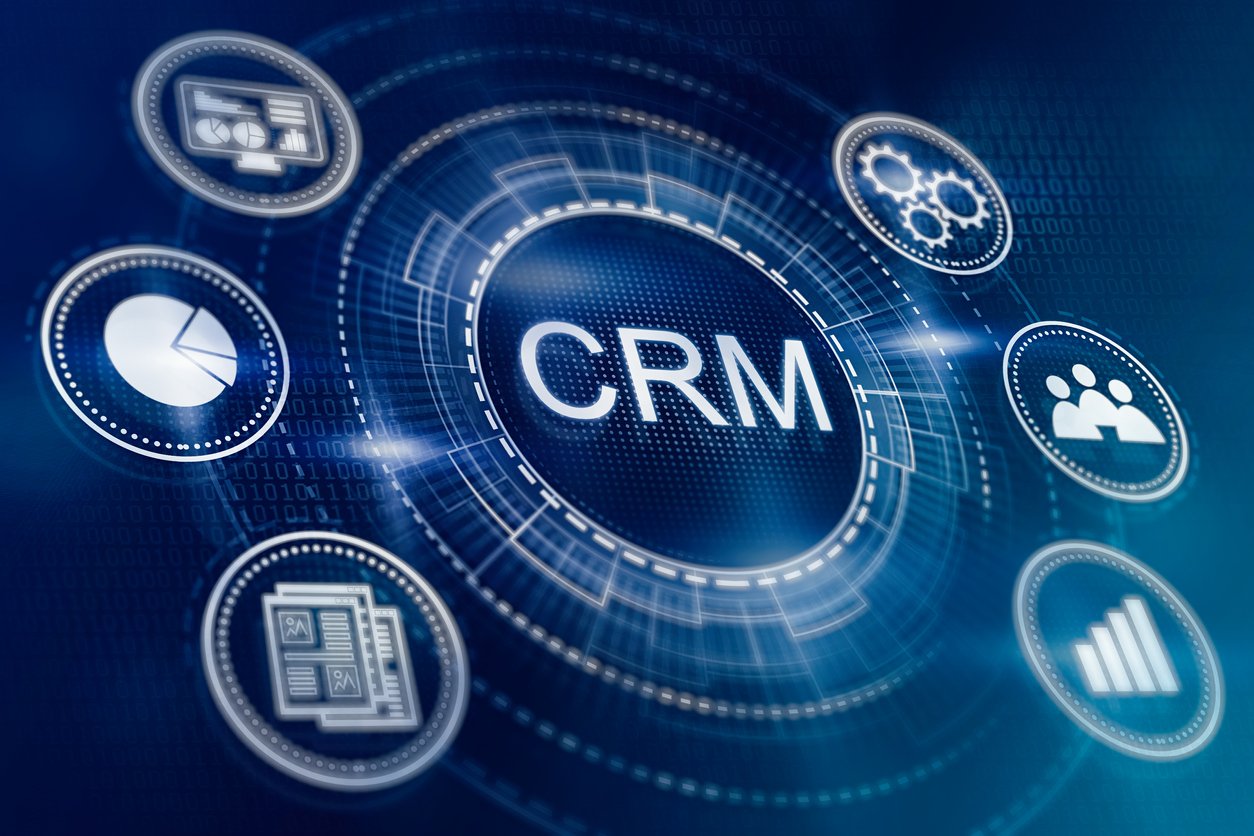
A Guide to Customer Service Management CRM [Benefits & FAQ]
 Updated on
Updated on
By Ringy
Table of Contents
Table of Contents
Customer service is the foundation of any business and its management is the key to success.
Have you ever had a terrible customer service experience that you swore never to deal with that company again?
We've all been there, and that's why it's so crucial for organizations to invest in customer service management. On the flip side, have you ever had a unique customer service experience in which you became a lifelong patron?
That's the power of excellent customer service management.
In this article, we'll dive deep into the world of customer service management and explore what it is, why it's essential, and how you can use it to grow your business. From customer service management strategies to the benefits of customer service CRM software, we've got you covered.
What Is Customer Service Management?

Customer service management (CSM) coordinates all consumer service activities and interactions to ensure superior customer satisfaction and loyalty. It involves developing and implementing strategies, policies, and processes that support effective customer service delivery.
Several key elements make up the customer service management procedure, including:
- Developing a customer service strategy
- Managing customer service operations
- Implementing knowledge management for customer service
- Managing customer service time
- Implementing customer service CRM
- Managing customer service processes
CSM aims to create a positive customer experience by providing prompt and efficient resolutions to inquiries or issues. It also involves managing patron feedback, analyzing client data, and improving customer service processes to meet market needs and expectations.
Automating customer service management helps employees and supervisors maintain long-lasting relationships. CRM software assists in streamlining the process by allowing users to set auto-responders, email reminders, and DRIP campaigns to make the most of customer correspondence.
Clients are contacted through various mediums, including but not limited to:
- Phone support
- Live chat
- Customer support software
Manual tasks associated with customer service are eliminated with quality customer service management systems, allowing support teams to concentrate on other essential business operations.
Observing performance metrics to identify improvement areas, assigning and routing tickets to the appropriate team members, and creating a knowledge base of FAQs that customers reference cannot be performed without customer service management software.
Customer Service Management Strategy

The success of customer service management lies in developing a comprehensive and effective strategy. It'll allow you to provide a consistent customer experience throughout the buying journey, converting more clients into loyal supporters.
A customer service management strategy should include the following stages:
- Understand the Customer - The initial step to creating a CSM strategy is understanding who your clients are, what they need, and how they want to be treated.
- Set Goals - Customer service management goals must align with the company's overall mission and objectives. Using SMART goals that are specific, measurable, attainable, relevant, and time-bound helps make achieving results easier.
- Define Processes - A clear understanding of the customer service process is essential. Define how customer service requests are handled, who receives them, and how they are tracked.
- Provide Training - Customer service representatives must be well-trained to provide exceptional client support. Provide ongoing training to ensure all agents have the skills and knowledge needed to succeed.
- Implement Technology - Customer service management software streamlines workflows, improves efficiency, and offers real-time insights into customer interactions.
A customer-centric approach is crucial in the development of a successful CSM strategy. This means understanding the needs and expectations of clients while using this knowledge to design and deliver customer service that exceeds their criteria.
Businesses also analyze interactions to identify all customer journey touchpoints. This can be done by answering the following questions:
- How is customer engagement measured?
- Which channels do clients contact the organization through?
- How often do prospects get in touch with the business?
- What do customers request or ask when they contact the company?
- Do clients who eventually stop purchasing from the business contact it more or less than those that don't?
The answers to these questions can help you visualize and map out the purchaser's journey while providing deeper insights into client interactions. Based on these customer touchpoints, a company may experience the following advantages:
- Increased customer lifetime value
- Reduced client churn rate
- Improved service or product personalization
- Better customer needs prediction
When businesses match their customer's expectations, it helps deliver more fulfilling experiences and ultimately assists in closing more deals. Use a customer service management strategy to combine all these nuances while tailoring your client's experience accordingly.
Types of Customer Service Management

There are several types of customer service management, each with its processes, technologies, and tools.
The type of CSM a business chooses to implement depends on various factors, including the size and type of organization, client demographics, and the nature of the customer support required.
By carefully considering these factors, companies can ensure they provide their customers with the most effective and efficient customer service possible. Support teams generally utilize these channels when assisting clients:
- In-Person Customer Service - This type of CSM involves face-to-face interactions in a physical store or at a service desk. In-person customer service is ideal for organizations requiring a personal touch, such as high-end retail stores, luxury hotels, and premium banks.
- Phone Customer Service - Telephonic customer service sees customers calling a dedicated helpline to resolve their queries or issues. This is ideal for companies seeking direct communication with customers, such as telecom companies and utility providers.
- Email Customer Service - Email customer service effectively provides customer support by allowing them to communicate their concerns in writing. Businesses that receive many requests, such as online retailers, e-commerce platforms, and software providers, commonly utilize this CSM.
- Chat Customer Service - Real-time communication allows customers to chat with support representatives through instant messaging. Perfect for enterprises catering to clients who prefer quick, convenient support, such as online gaming and social media platforms.
Now, let's look at the most common types of customer service management to understand each one.
Customer Service Operations Management
Customer service operations management involves overseeing and managing the day-to-day activities of customer service teams. This includes managing staffing levels, scheduling, and resource allocation to ensure prompt and efficient resolution of customer requests or problems.
Effective customer service operations management focuses on continuous improvement and optimization of client service processes to increase efficiency, reduce wait times, and improve customer satisfaction.
The following describes the key components of customer service operations management:
- Service Level Agreements (SLAs) - SLAs are agreements between an organization and its customers that outline the level of service that will be provided. SLAs help set expectations for both the company and the client while providing a way to measure the performance of customer service operations.
- Process Mapping - Process mapping is documenting and analyzing customer service operations to locate areas for improvement. This includes identifying the steps involved in each process, the roles and responsibilities of customer service employees, and any bottlenecks or inefficiencies.
- Technology - Software is critical to customer service operations management. Customer service programs, such as CRM systems, can automate many aspects of customer service operations, such as ticket tracking, case management, and email responses.
- Staffing and Training - The success of customer service operations management depends on the customer service staff's knowledge. Organizations should have sufficient employee levels to meet customer demand and provide adequate training to ensure that customer service teams have the know-how to deliver high-quality support.
Customer service operations management is a critical component of effective customer service. Organizations can improve customer satisfaction by implementing efficient, effective, and responsive processes to client needs while increasing efficiency, gaining valuable data insights, and improving staff well-being.
Knowledge Management Customer Service

Knowledge management in customer service involves creating and maintaining a centralized repository of information and resources that customer service teams can access to resolve customer inquiries and issues.
A solid knowledge management system should include various information, such as product knowledge, service procedures, and customer service scripts. This ensures that customer support teams can access the data they need to promptly and accurately resolve client issues.
The table below highlights different components of knowledge management customer service and their advantage:
|
Component |
Advantage |
|
Data Collection |
With the correct CRM system, gathering relevant data about customers and their interactions, including call center logs, email correspondence, and online chats, becomes more straightforward. |
|
Data Storage |
Knowledge management customer service management software gives you a secure location to store all collected data, making it easily accessible to customer service representatives. |
|
Data Analysis |
Collected data is evaluated to identify trends, areas for improvement and opportunities to enhance the customer experience. |
|
Knowledge Sharing |
Easier sharing of information and best practices among customer service agents to improve overall productivity. |
|
Continuous Improvement |
The ongoing process of using data analysis to improve the customer service experience and continuously refine knowledge management processes. |
Customer Service Time Management
Customer service time management ensures that customer service teams can handle customer questions timeously. It involves optimizing the time and resources allocated to handling client inquiries, complaints, and requests to provide the best possible customer experience while also maintaining the efficiency and productivity of the support team.
The table below highlights key elements of knowledge management customer service:
|
Component |
Description |
|
Task Prioritization |
Determining which customer service tasks are essential and must be completed first. |
|
Time Management Tools |
Using calendars, task lists, and timers to manage time effectively and gather data. |
|
Multitasking |
Balancing the need for multitasking with the requirement for focused work on individual tasks. |
|
Delegation |
Assigning tasks to other team members for efficient customer service. |
|
Process Automation |
Automating routine tasks using software to boost productivity. |
Effective customer service time management also involves continuous optimization of customer service processes to minimize response times, streamline workflows, and create the best environment possible for the patron.
Customer Service Process Management
Customer service process management involves designing, implementing, and refining the processes and systems used to deliver customer service. This includes developing standard operating procedures, setting client service standards, and tracking performance.
The following describes each stage of the customer service management process:
- Process Definition - This involves identifying the steps required to deliver exceptional customer service and documenting them concisely. With this, all customer service representatives understand the process and can provide consistent service.
- Process Mapping - Creating a visual representation of the customer service process aids in identifying improvement areas and can be utilized to develop new procedures or optimize existing ones.
- Process Standardization - Process guidelines ensure customer service processes are consistent and efficient. Teams can increase productivity by implementing process standardization, providing training, and using technology to automate routine tasks.
- Continuous Process Improvement - Continuous process improvement requires regularly reviewing and modifying customer service processes to keep things running smoothly. This can be accomplished through data analysis, customer feedback, and process audits.
Effective customer service process management assists customer service representatives in providing high-quality service.
Organizations can improve customer satisfaction, increase efficiency, gain valuable data insights, boost staff morale, and ensure consistent service by defining, mapping, standardizing, and improving customer service.
Customer Services CRM Explained

CRM or customer relationship management is a technology-driven approach to managing customer interactions and relationships. CRM for customer service is designed to help companies manage their customer service operations.
The table below showcases the tools available on a customer services CRM system:
|
Tool |
Description |
|
Contact Management |
Stores customer contact information, including phone numbers, email addresses, and social media profiles. |
|
Lead Management |
Tracks potential clients and manages the sales pipeline. |
|
Case Management |
Manages customer support tickets and resolves issues. |
|
Reporting and Analytics |
Provides valuable insights into client behavior and helps organizations make informed decisions. |
|
Automation |
Automates routine tasks, such as sending follow-up emails, tracking customer interactions, and logging customer service interactions. |
Customer services CRM software is a powerful tool that helps companies improve their client service processes and increase patron satisfaction. It also increases sales and productivity by automating routine tasks, providing valuable customer insights, and improving collaboration.
Benefits of CRM Customer Service

CRM software has become essential for companies to increase customer satisfaction, boost sales, and improve efficiency.
In this section, we'll break down the benefits of CRM customer service into four key sections: Improved customer experiences, enhanced collaboration, increased efficiency, and better data analysis.
Improved Customer Experiences
One of the primary benefits of CRM customer service is improved customer experiences. CRM software allows companies to efficiently manage customer interactions, including resolving complaints and answering questions.
With technology, customer service representatives can quickly access a client's complete purchase or support history, allowing them to provide more personalized support.
Here are additional client advantages when CRM customer service is implemented:
- Full understanding of the customer's needs and requirements.
- Personalization improves customer experience, as patrons feel valued and understood.
- Buyers will likely remain loyal to a company that provides excellent customer service.
Building trust and confidence with customers is simple when you have the right tools for the job. Software like Ringy assists in managing all customer service activities on a single platform. The cloud-based application was developed around what matters most: Team and customer communication.
Enhanced Collaboration
Another benefit of CRM customer service is enhanced collaboration. CRM platforms allow client support agents to communicate easily with other departments to resolve customer issues.
For example, the customer service representative can quickly transfer the call or chat to the technical team if a patron requires specialized support. CRM customer service also:
- Facilitates communication and collaborations between customer service, marketing, and sales departments.
- Results in retrieving more information from consistent client interactions
- Leads to improved customer devotion and satisfaction
By enabling enhanced collaboration between departments, CRM customer service ensures that customers receive the assistance they need. With reduced wait times, clearer communication, and everyone on the same page, CRM customer service management strengthens the relationship between the consumer and the organization.
Increased Efficiency
In addition to improved buyer experiences and enhanced collaboration, CRM customer service also helps to increase efficiency. By automating routine tasks, such as data entry and reporting, customer service representatives can focus on more critical tasks, such as assisting clients. This increases productivity because companies can serve more customers in less time.
CRM systems also centralize customer data and interactions, allowing agents to access the information they need when they need it. With a centralized customer information database, agents quickly access the information required to help customers without navigating multiple systems or manually searching for data. This not only saves time but also ensures that customer service teams are using up-to-date and accurate information.
Additionally, customer service teams can easily track and manage customer support tickets using CRM, ensuring no client issue goes unresolved.
Better Data Analysis
Finally, CRM customer service provides better data analysis, which helps organizations make informed business decisions. With the ability to track and analyze customer interactions, enterprises can identify trends and patterns in client behavior, allowing them to customize their customer service processes.
A CRM customer service system allows organizations to:
- Collect, store, and manage customer data in a centralized database.
- Access information such as customer preferences, purchase history, support requests, and more.
- Share data across the organization so relevant employees have access to the correct information.
Organizations can use customer data to identify common issues and then work to address these issues proactively. This not only improves the customer experience but aids in reducing the number of service requests while improving overall efficiency.
Increased Customer Loyalty
Improving customer service by implementing a CRM system can increase customer loyalty. When customers receive prompt, personalized support, they are more likely to return to the organization for future purchases or recommend the company to others.
Additionally, with a CRM system in place, customer service representatives can track customer interactions and satisfaction over time, allowing them to identify potential customer loyalty problems. When customers are satisfied with the service they receive they're more likely to remain loyal to a business.
FAQs
What Is Customer Engagement CRM?
Customer engagement CRM is a type of CRM that focuses on improving customer interactions and building stronger relationships. It is designed to help companies understand customer behavior and preferences and use that information to personalize communications or marketing.
What Is Customer Service Management in Retail?
Customer service management in retail is managing customer interactions and experiences in a retail setting. It involves everything from managing customer service operations and processes to training agents and tracking customer satisfaction.
What Is Customer Service Management Strategy?
A customer service management strategy is a plan for managing customer interactions and experiences. It outlines the goals, objectives, tactics, and processes that customer service teams utilize to achieve the desired results. A customer service management strategy is essential to serving your client better.
Customer Service Management - Final Thoughts
Customer service management is critical for any business wanting to provide excellent customer experiences and build solid client relationships. Whether you want to improve customer satisfaction, increase sales, or simply streamline your customer service operations, CRM software is an effective tool to help achieve these goals.
With its ability to automate routine tasks, provide valuable insights into customer behavior, and improve collaboration among agents, CRM platforms are an integral part of a successful customer service management strategy.
Remember, the key to success in customer service management is to focus on providing an excellent customer experience. You can build strong customer relationships and drive long-term business success by putting clients first and using tools like Ringy to support your efforts.
Take the first step towards improving your customer service management today.
Request a demo to learn how Ringy can help you to achieve your customer service goals.

Skyrocket your sales with the CRM that does it all.
Calling? Check. SMS? Check. Automation and AI? Check. Effortlessly keep in touch with your customers and boost your revenue without limits.

Take your sales to new heights with Ringy.
Sales in a slump? Ringy gives you the tools and flexibility you need to capture leads, engage with them, and turn them into customers.
Subscribe to Our Blog
Enter your email to get the latest updates sent straight to your inbox!
Categories
Related Articles




































































































